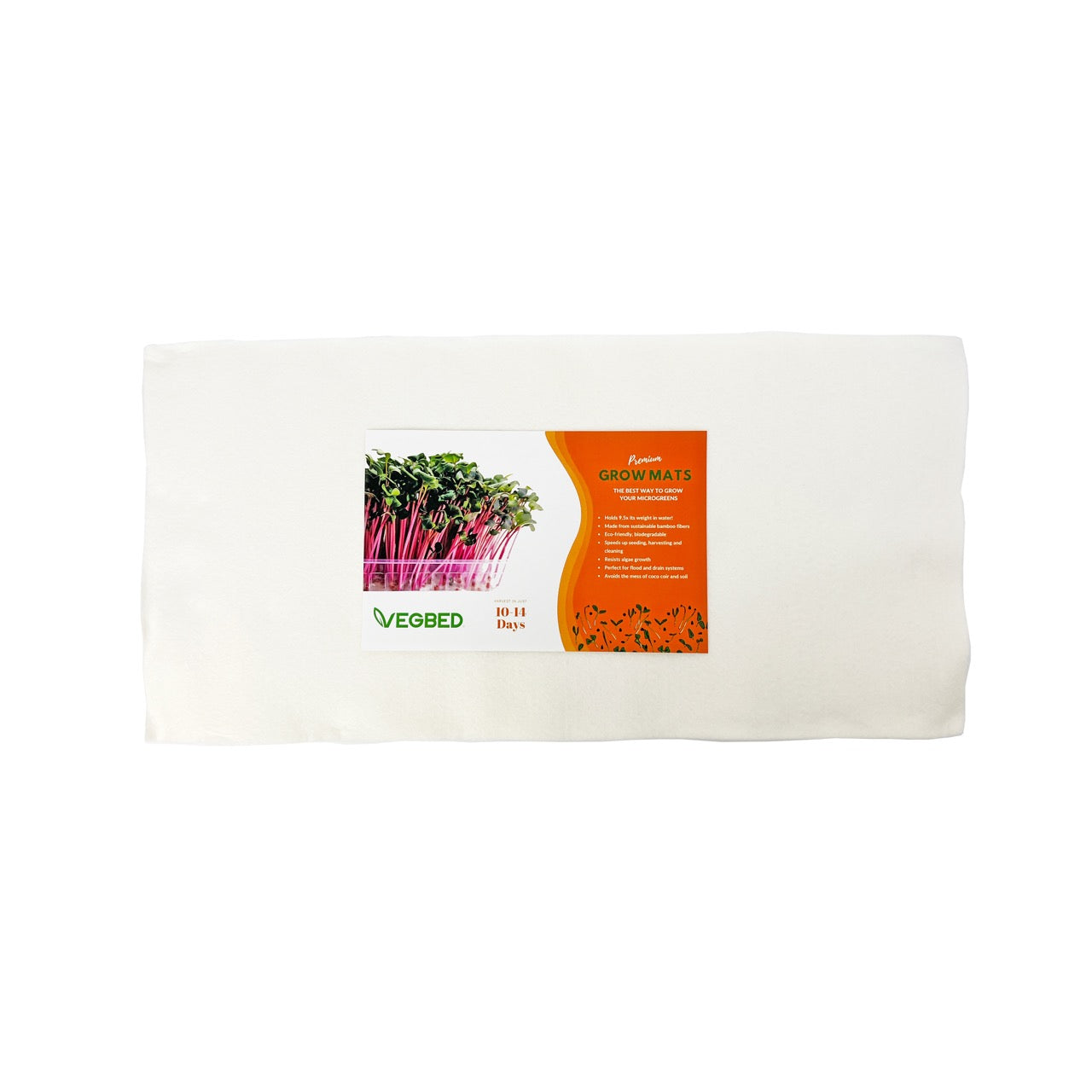Microgreens have gained popularity in recent years due to their unique flavors, vibrant colors, and potential health benefits. But what exactly makes these tiny greens so nutritious?
In this blog post, we will delve into the science behind microgreens and explore their impressive nutritional value.
Nutrient Density
Microgreens are incredibly nutrient-dense due to their unique growing process. These young and tender greens are harvested at an early stage of growth, typically within 7 to 21 days after germination. During this short period, microgreens accumulate a concentrated amount of nutrients to support their rapid growth. Here are a few examples of the nutrient content found in microgreens:
- Vitamin C: Microgreens like broccoli, kale, and red cabbage are known for their high vitamin C content. Vitamin C is an antioxidant that supports immune function, collagen synthesis, and the absorption of iron.
- Vitamin K: Microgreens such as beet greens, spinach, and Swiss chard are excellent sources of vitamin K. This vitamin plays a crucial role in blood clotting, bone health, and may have anti-inflammatory properties.
- Beta-Carotene: Microgreens like carrots, basil, and dill are rich in beta-carotene, which is converted into vitamin A in the body. Vitamin A is essential for vision, immune function, and cell growth.
These are just a few examples, but microgreens can also provide other vitamins such as B vitamins, and minerals like potassium, magnesium, and iron.
Essential Vitamins, Minerals, and Antioxidants
Microgreens are packed with a wide range of essential vitamins, minerals, and antioxidants that are vital for overall health and well-being. Some specific nutrients commonly found in microgreens include:
These are just a few examples, but microgreens can also provide other vitamins such as B vitamins, and minerals like potassium, magnesium, and iron.
Antioxidant Power
Microgreens are known to be potent sources of antioxidants. Antioxidants help protect the body's cells from damage caused by harmful molecules called free radicals. The high antioxidant content in microgreens, including vitamin C, vitamin E, and various phytochemicals, may contribute to their potential health benefits and ability to combat oxidative stress.
By incorporating a variety of microgreens into your diet, you can benefit from their diverse nutrient profile and enjoy the array of flavors and textures they offer.
Phytochemicals and Bioactive Compounds
Microgreens are known to contain a wide array of phytochemicals and bioactive compounds. These are naturally occurring compounds that provide various health benefits. Some examples include:
- Polyphenols: Microgreens like broccoli, radish, and red cabbage are rich in polyphenols, which have antioxidant and anti-inflammatory properties. They may help reduce the risk of chronic diseases, such as heart disease and certain cancers.
- Sulforaphane: Cruciferous microgreens, such as broccoli and kale, contain sulforaphane, a bioactive compound known for its potential anti-cancer properties. It may support detoxification processes in the body and help inhibit the growth of cancer cells.
- Lutein and Zeaxanthin: Microgreens like spinach and Swiss chard are excellent sources of lutein and zeaxanthin, which are carotenoids that promote eye health and may help reduce the risk of age-related macular degeneration
Digestibility and Absorption
Microgreens are highly digestible and their nutrients are readily absorbed by the body.
The delicate nature of microgreens, combined with their tender leaves and short growth cycle, makes them easier to chew and digest compared to mature greens. This allows for better nutrient absorption and utilization by the body.
Additionally, the high water content in microgreens contributes to their digestibility. The water helps break down the nutrients and facilitates their absorption in the digestive system, ensuring that the body can effectively utilize the vitamins, minerals, and other beneficial compounds present in microgreens.
Variability in Nutrient Content
There is variability in the nutrient content of microgreens among different varieties, growing conditions, species, and maturity levels. Factors such as the quality of the growing medium, the amount of light and water the microgreens receive, and the specific genetic characteristics of each variety can all influence the nutrient levels.
It's important to note that while microgreens are generally considered nutrient-dense, the exact nutrient composition can vary. To maximize the nutritional benefits, it is recommended to consume a diverse selection of microgreens, including different varieties and colors. This way, you can obtain a broader range of nutrients and bioactive compounds.
Conclusion
Microgreens are not just a garnish on your plate; they are a powerhouse of nutrition. Understanding the science behind microgreens and their nutritional value can help you make informed choices about incorporating them into your diet. So, next time you add a handful of microgreens to your meal, remember the abundance of nutrients you're nourishing your body with.
Remember, if you have specific dietary concerns or conditions, it's always best to consult with a healthcare professional or registered dietitian for personalized advice.




